You
can also view the message online

Châtenay-Malabry (FR - 92290), September 05, 2022
EFITA newsletter / 1055 - European Federation for Information Technology in Agriculture, Food and the Environment
The informatique-agricole.org site offers you the possibility of subscribing the RSS feeds of its two newsletters
See RSS feeds to implement to ensure that you continue to receive this newsletter
To unsubscribe this newsletter, please contact me directely: guy.waksman(a)laposte.net if this link Unsubscribe does not work.

To correspond with me (GW), please use this address: guy.waksman(a)laposte.net
To subscribe the efita newsletter (please ask your friends and colleagues to test this link)
Efita Newsletters subscription
Let's visit the Vatican together
See vatican.va
Before computers: Renault tractor
Weekly newsletters about ICT in Agriculture in English and French
Both newsletters have around 10000 subscribers.
>>> Last weekly EFITA Newsletters in English (created in 1999) Efita Newsletters
>>> Last weekly AFIA Newsletters in French (created more than 20 years ago in 1997) Afia Newsletters
>>> Statistics for the last efita newsletter
>>> Last issue of the afia newsletter
>>> Last available satistics for the afia newsletter
FIRA USA, the Agricultural Autonomous Solutions event for California and North America Growers
18-20 October - FRESNO, California
- Business Time with expo zone and networking
- Panel discussions and breakout sessions
- In-field demos with bus tour
- R&D Day
See fira-agtech.com
Global Ag Tech Initiative, @GlobalAgTech
Connecting, engaging, and fostering dialogue in global food production with technology as the foundation for driving innovation and solutions.
See twitter.com
Flora, The Gypsy Flower Seller, by Sir George Clausen
| 01 - 01/09/22 |  |
Robotics in the field: where are we and where are we going?
See aspexit.com
Monarch Tractor / CalOSHA: Overcoming Misconceptions About the Future of Autonomous Farming in California
On June 16, 2022, Cal/OSHA's 4-3 opinion to deny petition 596 was the decision heard around the agricultural world. Filed by Monarch Tractor on December 15 of the previous year, petition 596 sought to clarify the state of California’s agricultural equipment regulations as they relate to modern self-driving tractors.
Monarch Tractor—the innovative company behind the world’s first fully electric, driver optional tractor—argued that the current regulations, which were drafted in the 1970s, fail to account for many of the ways tractors and other farming equipment have advanced in the 21st century. Although the Occupational Safety and Health Standards Board staff agreed with Monarch Tractor that the language that appears in Title 8, section 3441(b) may be outdated, this opinion was not enough to convince Cal/OSHA to approve the petition.
Many industry experts lamented this decision as a step backward for California agriculture. Without a quicker way to introduce the latest technologies on the farm, they argued, the largest agricultural state in the U.S. would surely be left behind. Autonomous tractors and other ag robotics are, after all, a necessary part of feeding a growing population in the face of labor shortages, rising input costs, fewer resources and increasing environmental concerns.
While it's true that advancing technologies provide solutions to many of these problems, the decision to deny Monarch Tractor's petition does not extend the timeline for bringing new autonomous equipment into the field. Quite the opposite. When Monarch Tractor filed the petition, the company sought to speed things up. The Board’s opinion merely maintains the status quo.
.../...
See agricultural-robotics.com
How Dealers and Distributors are Advancing the AgTech Revolution
Joani Woelfel, President and CEO of the Far West Equipment Dealers Association - FWEDA, and Jennifer Edney, President of the Edney Distributing Company, share the ways these supply chain sectors work to move the farming industry forward.
While much of the conversation about bringing agricultural robotics and other autonomous technologies onto the farm often centers on producers, startups and equipment manufacturers, the focus on the developers and end users fails to include two essential sectors within the overall supply chain.
Equipment dealers and wholesale distributors are the ones making sure the machinery gets where it needs to go—and that their customers know how to use, maintain and repair their purchase after it arrives. Without dealers and distributors to facilitate connections between manufacturers and farmers, it would be increasingly challenging for both sides to do their jobs.
That’s a lot of responsibility, especially as the industry continues to embrace increasingly technical equipment that requires dealers and distributors to be savvier than ever before. Although these supply chain sectors have their work cut out for them, they are committed to helping farmers access the agtech equipment that will support long-term sustainable food production.
Joani Woelfel, President and CEO of the Far West Equipment Dealers Association, and Jennifer Edney, President of the Edney Distributing Company, share their perspectives on how dealers and distributors are moving the industry forward.
.../...
See agricultural-robotics.com
Winter Work, by Sir George Clausen
| 02 - 01/09/22 | 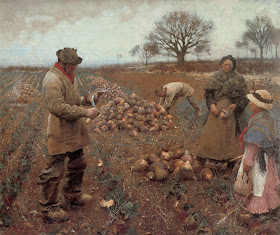 |
How did we see the future yesterday??
See the incredible collection developed by Alain Fraval
FutureFarming.com
> Case IH Connected Farm gets the most out of digital technology
3,000 hectares Connected Farm in Brazil has complete digital agriculture solutions for pre-planting, seeding, treatments, harvesting and post-harvesting. The Axial-Flow Series 250 Automation combine uses artificial intelligence to partially automate harvest and increase productivity.
> Cropify offers growers technology for objective grain classification
> Precision harvesting market to grow to USD 22.4 billion by 2027
> Best management practices for harvest data
> LYRO to deliver robotic packers to growers
> HarvestEye measures size and count of potatoes during harvest
> Off-the-shelf components to speed up harvest automation
> Australian harvesting robot picks apples in seven seconds
> Wageningen University on a quest to develop the best robotic grippers
> Using harvesting platforms to broaden the workforce
> Green Growth Yield Monitor simplifies collecting harvest data
> Finding and overcoming field robot limitations
A new field robot design might look good on paper, and it may even work under lab conditions or specific field settings. Change the conditions in which it has to operate, though, and things can get tricky. In Ontario, an autonomous working group has been putting an array of field robots through the ringer. The accomplishments – and yet-to-be-solved failings – of several machines were exhibited.
> Field robots:
Solinftec Solix sprayer robot uses the sun to auto-detect and spray weeds
In addition to its Solix Scouting robot, Solinftec will soon have a new automated weed identification and control system on the market. The new Solix Sprayer robot, designed to detect and spray weeds, will be available in 2023.
> Drones: Vietnamese farmer adopts drones in rice farming
62-year-old Vietnamese farmer Le Thanh Nguyen is one of the earliest farmers in Vietnam to adopt agricultural drones in rice production. He uses a XAG P100 drone for crop spraying, fertilising and seeding.
> Expert opinion: How predictive maintenance and analytics can improve farming
Technologies like Artificial Intelligence (AI) and Robotics, Computer Vision, and the Internet of Things (IoT) can help farmers lower equipment repair and maintenance costs.
> Crop solutions: Disease detection is in the air
New technology is being developed that can collect crop pathogen microorganisms for DNA analysis, from the air and more.
> Soil health: CropX launches nitrogen leaching monitoring tool
CropX Technologies announced the commercial launch of a new capability for its farm management system. The new tool continuously tracks the movement of nitrogen and salts in the soil.
See futurefarming.com
Portrait of a Peasant Woman, by Sir George Clausen
| 03 - 01/09/22 |  |
Smoking: How large of a global problem is it? And how can we make progress against it?
The WHO estimates that every year around 8 million people die prematurely as a result of smoking — this is about one in seven deaths worldwide. Smokers lose on average about 10 years of their life. Millions more live in poor health because of it.
Smoking is a particularly large problem in high-income countries. There, cigarette smoking is the most important cause of preventable disease and death.
In this article from July 2021, we detail the massive global health burden of smoking. We also describe how the progress against smoking that the chart shows has been achieved: through a public health campaign that makes use of a wide range of measures.
| See
ourworldindata.org 01/09/22 |
 |
Trimble to Acquire French Ag Tech Company Bilberry
Bilberry is a pioneer in applying AI technology that identifies a wide variety of weed species in real time for a broad range of crop types.
See globalagtechinitiative.com
Ceres Imaging, Soiltech Wireless Form Partnership to Optimize Irrigation Strategies
Ceres will use Soiltech Wireless technology to deliver unique water optimization and irrigation insights to their customers.
See globalagtechinitiative.com
Harnessing the Digital Evolution
Agricultural Platform brings streamlined connectivity, organization to crop data collection.
See globalagtechinitiative.com
A Normandy Peasant, by Sir George Clausen
| 04 - 01/09/22 |  |
AgTech and Genomics Pioneer Pattern Ag Closes $35M Funding Round
Using breakthroughs in genomic sequencing, Pattern provides predictions about next season’s pest, disease, and fertility risks to crops.
See globalagtechinitiative.com
Intelinair Named 2022 'AgTech Data Analytics Company of the Year'
AgTech Breakthrough recognizes the top companies and technologies in global agricultural and food technology markets today.
See globalagtechinitiative.com
EOS Crop Monitoring Selected As 'Yield Forecasting Solution of the Year' in the 2022 AgTech Breakthrough Awards
Remote sensing technologies and satellite image analytics are gaining more recognition as reliable and effective tools for agriculture.
See globalagtechinitiative.com
What are the environmental impacts of food and agriculture? by Hannah Ritchie, November 04, 2019
Feeding the world whilst reducing food’s impact on the environment is one of our greatest challenges in the coming decades. What are food’s environmental impacts?
Food, energy and water: this is what the United Nations refers to as the ‘nexus’ of sustainable development. As the world’s population has expanded and gotten richer, the demand for all three has seen a rapid increase. Not only has demand for all three increased, but they are also strongly interlinked: food production requires water and energy; traditional energy production demands water resources; agriculture provides a potential energy source.
Our latest series on Our World in Data focuses on the environmental impacts of food. Ensuring everyone in the world has access to a nutritious diet in a sustainable way is one of the greatest challenges we face. We cover the human aspects of food and nutrition in various entries, including hunger and undernourishment, micronutrient deficiency, food per person, diet compositions and obesity. In this series we focus more on the environmental consequences.
What are the environmental impacts of food and agriculture?
The visualization here shows a summary of some of the main global impacts:
- Food accounts for over a quarter (26%) of global greenhouse gas emissions;
- Half of the world’s habitable (ice- and desert-free) land is used for agriculture;
- 70% of global freshwater withdrawals are used for agriculture;
- 78% of global ocean and freshwater eutrophication (the pollution of waterways with nutrient-rich pollutants) is caused by agriculture;
- 94% of mammal biomass (excluding humans) is livestock. This means livestock outweigh wild mammals by a factor of 15-to-1. Of the 28,000 species evaluated to be threatened with extinction on the IUCN Red List, agriculture and aquaculture is listed as a threat for 24,000 of them.
Food, therefore, lies at the heart of trying to tackle climate change, reducing water stress, pollution, restoring lands back to forests or grasslands, and protecting the world’s wildlife.
| See
ourworldindata.org 01/09/22 |
 |
AgGateway
AgGateway is a global, non-profit organization whose members develop standards and other resources so that companies can rapidly access information. The result:
- Cost savings from more efficient business processes
- Inventory management/traceability
- Interoperability in field operations
- Ability to leverage data to increase profitability and sustainability.
No other group is doing what AgGateway does: We provide a unique, global forum across industry sectors, so that companies can meet to solve digital challenges for agriculture and related industries.
See aggateway.org
Solinftec unveils a new weed-killing robot to reduce farms’ needs for chemical inputs, AFN, by Jennifer Marston
- US- and Brazil-based ag robotics startup Solinftec has unveiled its new Solix Sprayer robot that can autonomously detect and spray weeds in the field. The new ‘bot joins the Solix Scouting robot that’s already in the fields in Brazil and the US.
- Manufacturing, research and development company McKinney Corporation, which specializes in prototype jobs, will produce and manufacture the Solix Spray robot, which is slated to become commercially available in 2023.
- Solinftec says its new offering can help farms reduce their chemical inputs and deliver a lower carbon footprint and environmental impact.
Spot-spray weed-killing robots offer a more sustainable, cost-effective product for farms that face soaring input costs, supply chain hiccups, and an inflationary economic environment.
Solinftec’s Solix Spray robot applies spot-spray applications to growers’ fields, versus the old ‘spray-and-pray’ method that’s increasingly seen as wasteful and bad for the environment. The machine is powered by four solar panels that control the drive and spray systems; Solix can also provide reports to farmers on crops, identify weeds, diseases, and pests, and offer other data such as analysis on inputs saved.
…/…
See agfundernews.com
The Haymaker a study in shadows, by Sir George Clausen
| 05 - 01/09/22 |  |
Meta launches grocery shopping on WhatsApp in India, Tech in Asia, by Gabriel Budi Sutrisno
Meta, in collaboration with Indian ecommerce firm JioMart, is bringing a shopping experience on WhatsApp in the country, allowing users to buy JioMart grocery products on the messaging app.
The two companies tested the integration with select users two years ago. Meta said this is the first end-to-end shopping experience on WhatsApp.
Users in India can start shopping on JioMart through WhatsApp simply by sending “Hi” to the ecommerce firm’s number. They can then browse the JioMart catalog, add products to their cart, and make payments without leaving the chat.
“Business messaging is an area with real momentum and chat-based experiences like this will be the go-to way people and businesses communicate in the years to come,” Mark Zuckerberg, CEO of Meta, said in a post.
See techinasia.com
Rising and falling costs
| 01
- 01/09/22 |
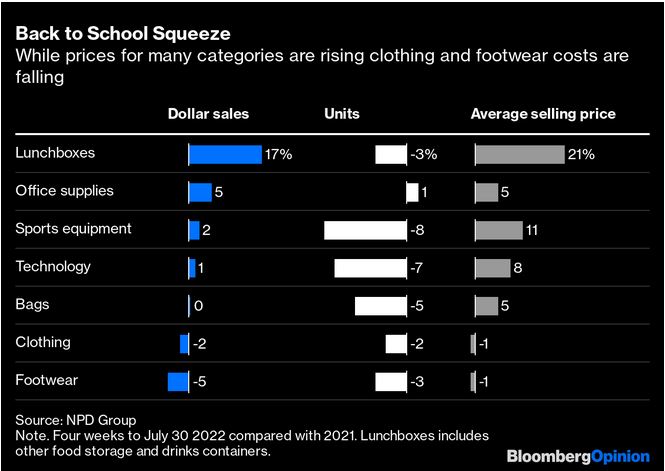 |
Meet the GROWhort: 3Bee hopes to avert bee-pocalyspe with hive monitoring tech GROW, AFN, by Jack Ellis
You might not realize it, but we all get a massive buzz off of bees.
For millennia, humans have reared these creatures for their honey, prized for its utility as a sweetener, preservative, and for its medicinal properties.
More than that, bees are our planet’s arch-pollinators; responsible for helping many of the world’s plants to reproduce. That means they play a much bigger role in our survival than simply producing honey (tasty as it may be.) Pollination leads to new generations of plants that oxygenate our atmosphere, strengthen our soils, sequester carbon – and, of course, that feed, clothe, and shelter us.
But pollinators — including bees — appear to be in decline. The picture is a complicated one that is yet to be fully explained, but disease, parasites, habitat destruction, and climate change are all argued to play a role.
Italian startup 3Bee is aiming to fight back on behalf of our furry friends by using technology to “listen to the bees’ needs and intervene when they are unwell,” as it states on its website. This tech platform include sensors that can be placed in honeybee hives in order to monitor what’s going on inside.
3Bee recently joined the GROW Impact Accelerator, which is backed by AgFunder and GROW. AFN spoke to the startup’s CEO Niccolò Calandri (NC) to find out more about the buzz-iness…
See agfundernews.com
Clean energy cheap enough to be politically palatable
| 02 - 01/09/22 | 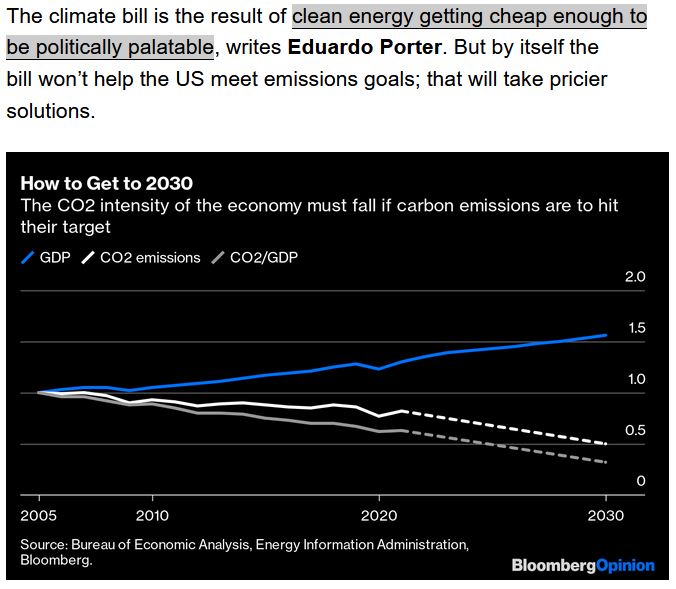 |
Virridy partners to improve water security in Africa through climate finance-based model, AFN, by Lucy Ngige
Virridy (formerly Sweetsense) a developer of satellite-powered sensors that monitors environmental resources in Africa, has partnered with the Millennium Water Alliance (MWA) and the Mortenson Center in Global Engineering and Resilience at the University of Colorado Boulder to ensure that people facing the first impacts of climate change have access to reliable and safe drinking water.
The partnership claims to already support close to five million people’s water supplies in Ethiopia and Kenya.
It will expand over the next 12 months into other countries in East Africa like the Democratic Republic of Congo, using local networks and partners to support and maintain its water monitors.
…/…
See agfundernews.com
Winter is coming in Germany
| 03 - 01/09/22 | 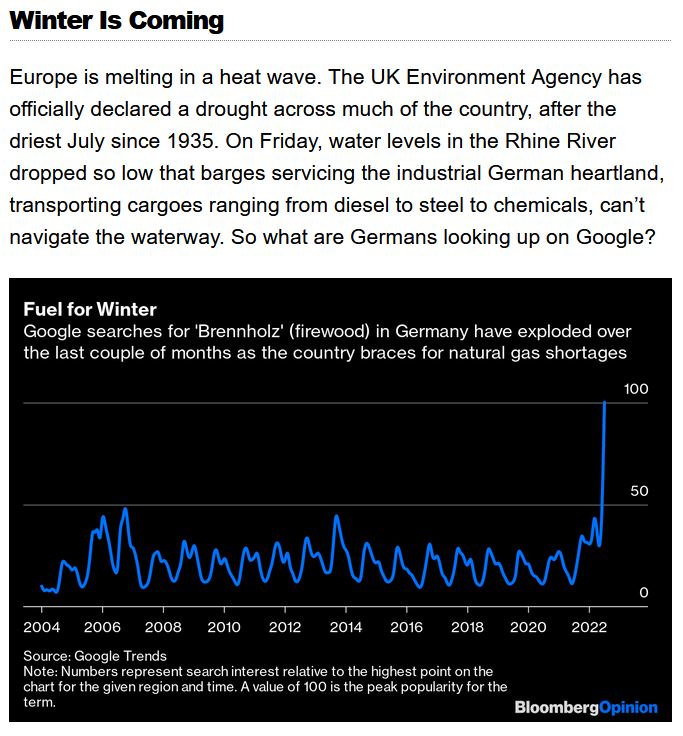 |
Midstream Tech startups continue to bolster food supply chains navigating uncertain times, AFN, by Jennifer Marston
Midstream Tech startups — that is, those operating in the middle of the agrifood value chain — raised $3.8 billion in 2021, just a tad more than the $3.7 billion in 2020, according to AgFunder’s 2022 AgriFoodTech Investment Report.
Tools and services that bolster the food supply chain made up the bulk of funding deals for midstream technologies in 2021. This is unsurprising, given the state of the current supply chain that’s been upended by war, inflation, and pandemic-related breakdowns, and which may continue to be chaotic in the near term.
The AgFunder-defined Midstream Tech category includes technologies and services that address the middle of the agrifood value chain. That includes food safety and traceability, logistics and transport, and processing.
As Midstream Tech is in the middle, there’s often quite a bit of overlap with the consumer-facing Downstream category and Upstream companies working closer to the farm or lab. It also encompasses a wide range of technology types.
…/…
See agfundernews.com
Monkeypox in the world
| 04 - 01/09/22 | 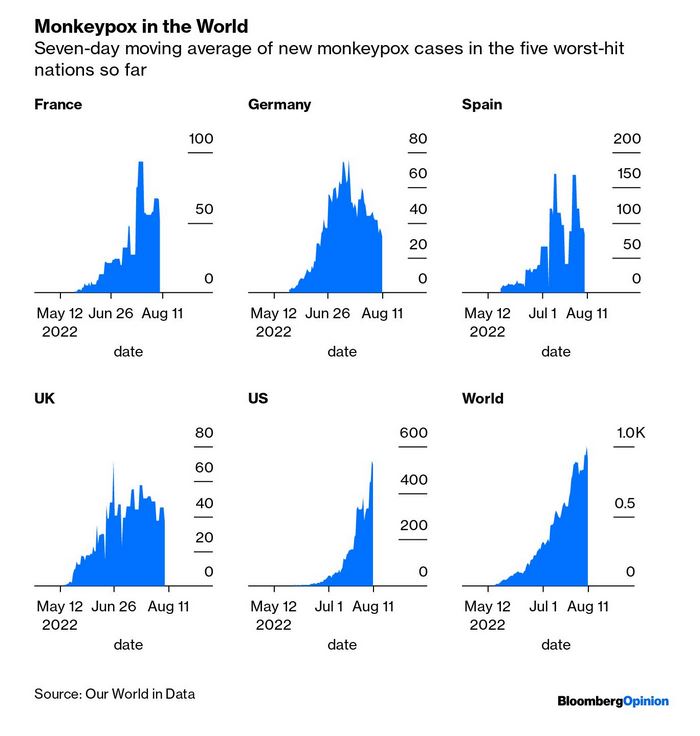 |
A warming planet is changing our minds, by Busani Bafana, August 11, 2022
.../...
The Intergovernmental Panel on Climate Change (IPCC), in a report published in February 2022, also revealed that rapidly increasing climate change is a rising threat to mental health and psychosocial well-being.
“Climate change has adversely affected physical health of people globally (very high confidence) and mental health of people in the assessed regions (very high confidence),” the top scientists said in the 6th Assessment Report on Impacts, Adaptation and Vulnerability.
“In assessed regions, some mental health challenges are associated with increasing temperatures (high confidence), trauma from weather and climate extreme events (very high confidence), and loss of livelihoods and culture (high confidence),” the IPCC warned.
Dr. Diarmid Campbell-Lendrum, WHO climate lead and an IPCC lead author, notes that WHO member states have prioritized mental health in any effort to protect their citizens from the impact of climate change. But only a few have implemented national health and climate change plans owing to lack of funding.
Voir allianceforscience.cornell.edu
Megalodon shark was longer than a bus
A 3D model of a colossal shark that roamed the oceans millions of years ago suggests that the beast was 16 metres long and could have eaten a whale in just a few bites. Few megalodon fossils exist, but researchers were able to create the digital model using a rare collection of vertebrae and teeth, as well as scans of modern great white sharks (Carcharodon carcharias). They calculated that the ancient creature weighed around 70 tons — as much as ten elephants— and that its open jaw stretched to 2 metres wide.
See theguardian.com
Quatre taureaux (vers 1650), par Paulus Potter (1625-1654), Galerie Sabauda, Turin
| 06 - 01/09/22 |  |
A first thought for today
Someone needs to explain to me why wanting clean drinking water makes you an activist and why proposing to destroy water with chemical warfare doesn't make a corporation a terrorist.
Winona LADUKE, activist, environmentalist, economist, and writer (1959 -)
A second thought for today
I cannot walk through the suburbs in the solitude of the night without thinking that the night pleases us because it suppresses idle details, just as our memory does.
Jorge Luis BORGES, writer (1899-1986)
A third thought for today
In the new version of the law of supply and demand, jobs are so cheap -- as measured by the pay -- that a worker is encouraged to take on as many of them as she possibly can.
Barbara EHRENREICH, journalist and author (1941-)
Un laboureur et son troupeau (1648), par Paulus Potter, Gemäldegalerie Alte Meister, Cassel (Hesse)
| 07 - 01/09/22 |  |
Beyond organic farming – harnessing biodiversity-friendly landscapes, byTejaTscharntke, IngoGrass, Thomas C.Wanger, Catrin Westphal, Péter Batáry
Biodiversity continues to decline rapidly, despite decades of repeated national and international policy efforts. Agricultural intensification is a major driver of biodiversity losses, while conversion to organic farming has been suggested as a key technique to halt or reverse this trend.
In contrast to this widespread view, certified organic agriculture raises local richness of widespread species by just a third when compared to conventional farming. This is achieved through waiving synthetic agrochemicals, but leads to considerable yield losses, requiring the conversion of more land to agriculture to obtain similar yields.
Diversifying cropland and reducing field size on a landscape level can multiply biodiversity in both organic and conventional agriculture without reducing cropland productivity.
Complementing such increases in cropland heterogeneity with at least 20% seminatural habitat per landscape should be a key recommendation in current biodiversity frameworks.
See sciencedirect.com/
Trading down for all
| 05 - 01/09/22 | 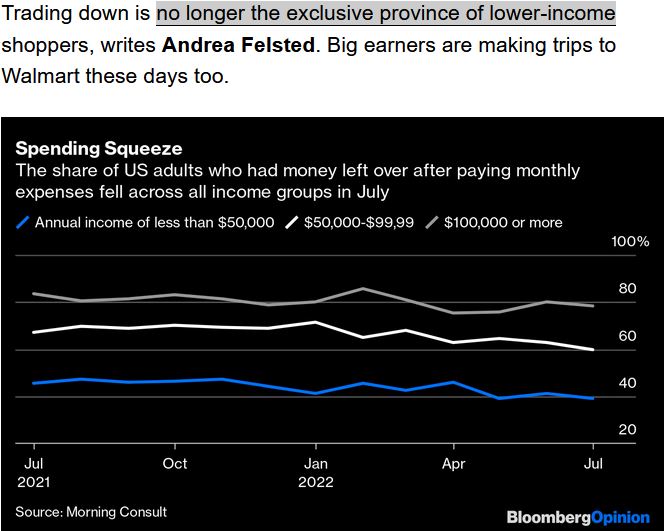 |
Nori integrates with FarmLogs to help more farmers monetize their soil carbon, Medium, by Nori
>>> Simplifying the process of enrolling in carbon markets
At Nori, we’re creating a marketplace that brings transparency and true price discovery to the world of carbon programs. For the past 5 years, we’ve been building tools, talking with growers, and enrolling farmers into our carbon marketplace. From the 15 farmers who have been paid over $1.6 million dollars for the sale of their carbon credits to the many more who are actively working with our team on enrolling their data, we have a foundation of working directly with farmers at every step. We know their pain points and have been steadily growing our marketplace with the farmers whom we serve.
And now that we’ve established that foundation, it’s time to ramp up.
.../...
See medium.com
Mobile phone sales decline
| 06 - 01/09/22 | 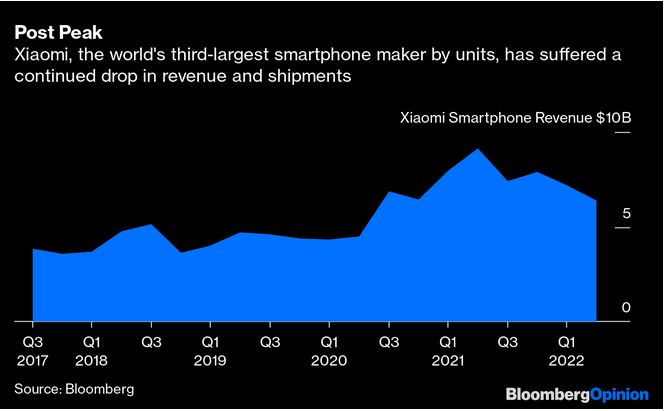 |
The Roots of Ukraine Resistance, by Yuliya Tymoshenko, Aug 19, 2022
Ukraine's success in fighting Russia's much larger army is rooted in the fact that the country has been unified, in a way that it has not been in centuries, by a single purpose: preservation of its sovereignty, lives, and liberties. And now that unity is fueling the spread of partisan warfare in areas controlled by the occupier.
.../...
Resistance concludes with nothing like the elation that everyone would expect victory over Nazism and fascism to have delivered. Instead, Kochanski reveals how confusion, disappointment, and bitterness reigned as the partisan armies began to confront an uncertain future and their failures during the war. Kochanski quotes one: “As the smoke cleared from the battlefield, it began to emerge that we had suffered a huge national defeat … We clutched at the last illusory straws of hope. We had yet to adapt to the new situation, and now faced an enemy within.” The Nazis had lost, but for half of Europe a new and hideous occupation – by Stalin’s Red Army – had begun.
Ukraine’s liberation, when it comes, as it must, will not bring with it such disillusion. Yes, we will be numbed for a time by the sheer scale of the task of reconstruction looming before us. But we will also find in our country a continuing unity on the great goals that we are defending in this war: sovereignty, democracy, and Europe.
We will end this war with the foremost hope of our national existence since 1991 – the promise of EU membership – within our grasp. Securing our membership in the Union will, of course, demand a tenacity, resilience, and unity of purpose, akin to what our people are demonstrating today. But just as the occupied nations of Western Europe built vibrant democracies on the ruins of Nazi rule, and the ex-communist EU members in Central and Eastern Europe have built ever freer and more prosperous societies since throwing off the Soviet yoke in 1989, we in Ukraine, remembering the horrors of our struggle today, will see the hard reforms needed to join Europe as a much lower price than what we are now paying for our freedom.
|
See
project-syndicate.org
01/09/22 |
 |
The end of single-family houses
| 07 - 01/09/22 |  |
Regenerative farming is the future, says Prince Charles, Farmers Weekly, by Philip Clarke
Moves toward a more regenerative style of farming in the UK have received a warm endorsement from the Prince of Wales, who said failure to address some of the issues associated with industrialised agriculture was “too grim to contemplate”.
Addressing the 22nd World Congress of Soil Science in Glasgow on Thursday (4 August), Prince Charles described soil as an asset that was all too easily “overlooked, degraded and polluted”.
“Yet healthy living soil can securely feed growing populations with a nutritious and varied diet, mitigate the effects of climate change, and provide water and flood management,” he said.
“Indeed, soil is absolutely critical for delivering the ecosystem services on which we all rely. So, it is high time that such an extraordinary, miraculous living organic system, so disastrously degraded by industrialised agriculture, receives the proper attention it deserves.”
.../...
See fwi.co.uk
Teheran replacing Moscow
| 08 - 01/09/22 | 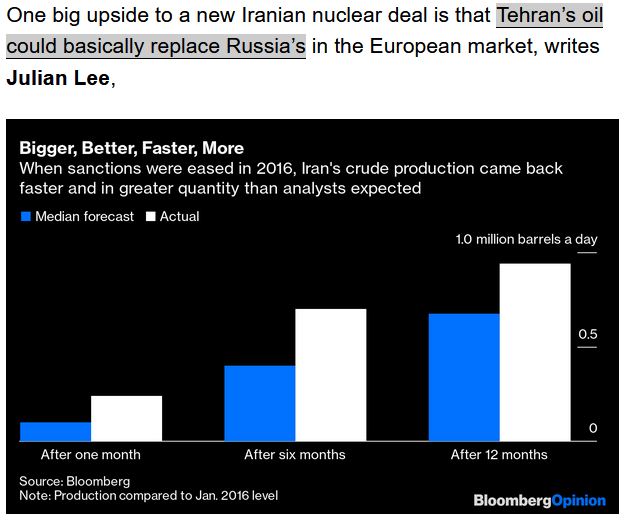 |
Pesticides, pollinators and food security, by Jonas Kathage, Jun 24, 2022
.../...
>>> Conclusion
The Commission’s press communications make it sound as if the proposed pesticide reductions will surely increase food security. However, this view is not supported by the Commission’s own impact assessment, which, apart from indicating much greater uncertainty, points to a reduction in agricultural production (in line with other recent analyses of the F2F and Biodiversity Strategies) - and reductions in agricultural production would certainly not increase food security, but rather reduce it.
A closer look at the postulated causal mechanism suggests that the Commission’s press communications and Vice President wildly inflate the risks pesticides pose to pollinators, and the benefits (wild) pollinators bring to crop production (and thus food security). They manage to do this by citing numbers without the necessary qualifications, leaving out context and by dismissing any positive contributions of pesticides to food production, resulting in a narrative that becomes a highly distorted version of what the evidence actually says.
1. Never mind the inconsistency between the interview, the speech and the press release in these numbers and what they refer to.
2. For example, for soybean, rapeseed and sunflower the dependence on pollination is only 25%. For pulses, tomatoes and citrus it is only 5%.
It is highest for apples, pears and peaches (65%) and some other fruits (40%).
The important cereals grown in the EU do not depend on pollinators at all.
So it is disingenous to say “dependent“ without further qualification.
These numbers come from another JRC report (Vallecillo et al., 2018) underlying the pollination chapter in the 2020 JRC report (Maes et. al, 2020).
The 2018 report cites Klein et al. (2007) as the source for these numbers, but I could not find them there. All Klein et al. (2007) seem to provide (Suppl. Material 2) are ranges of production reductions without pollinators.
Their “essential” category of >90% reduction without pollinators comprises only watermelon, cantaloupe/melon, pumpkin/squash/zuchini and a handful of rather exotic fruits and nuts. For the melons and pumpkin/zuchini types, it is the honeybee that is a primary pollinator (as for many other crops dependent on pollination).
See jkathage.substack.com
Le Taureau (1647), par Paulus Potter, Mauritshuis, La Haye
| 08 - 01/09/22 |  |
This factory breeds 30 million mosquitoes per week. Here’s why. By Bill Gates, August 15, 2022
These mosquitoes are allies in the fight against dengue and other deadly viruses.
See gatesnotes.com
Farmer’s Daughter: Activist lawsuits hinder EPA’s ability to balance ecological risk assessments, by Amanda Zaluckyj, The Farmer’s Daughter USA
.../...
The truth is that these biological evaluations aren’t going away anytime soon. As soon as the EPA settles one lawsuit, another one pops up. We can expect that to continue.
Despite the pressure, it’s absolutely imperative that the EPA has the time and resources available to make scientifically sound conclusions. Because all of those registrations are important crop-protection tools without which farmers will see lower yields and, as a result, a smaller food supply.
So instead of a knockout punch between FIFRA and ESA, the EPA needs to choreograph a graceful ballet routine to harmonize the two.
See agdaily.com
|
Gazette
de vitisphere.com, |
Healthy life expectancy, or the number of years someone can expect to live in good health, is rapidly improving in Africa.
In 2019, African healthy life expectancy hit 56 years. On average, healthy African lifespans expanded by around six months every year since 2000.
|
See
reliefweb.int
01/09/22 |
 |
You come from the future
Today’s changes may be new, but the concept of change is eternal. People have been dealing with it for all human history, and not always very well.
In this episode of the Human Progress Podcast, Jason Feifer uses lessons from the past and present to explain how we can best adapt to change. He reminds us that new things are usually not as scary as they first appear.
See transcript
See video
Fortunate cargo shippers
| 09 - 01/09/22 | 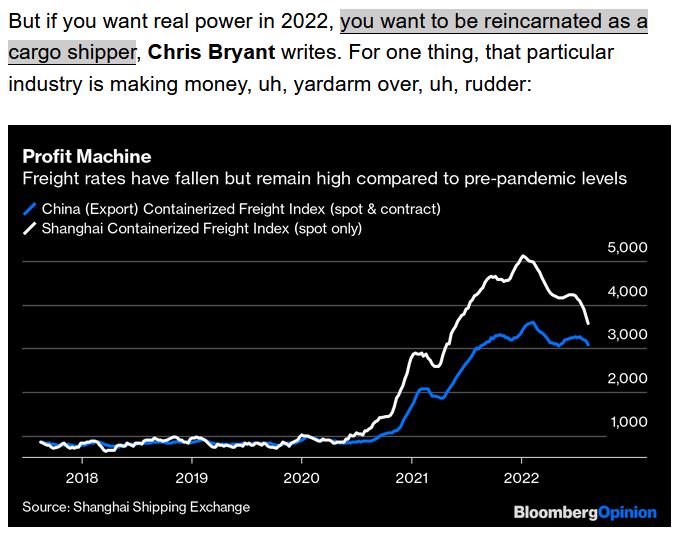 |
India’s Sex Ratio at Birth Begins To Normalize, by Yunping Tong
Son bias declines sharply among Sikhs, while Christians continue to have a natural balance of sons and daughters.
|
See
pewresearch.org
01/09/22 |
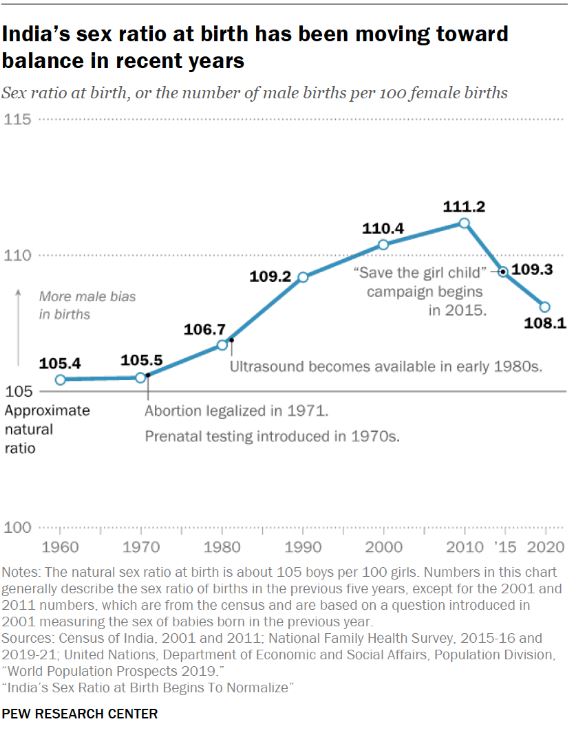 |
Refugees' crisis
| 10 - 01/09/22 | 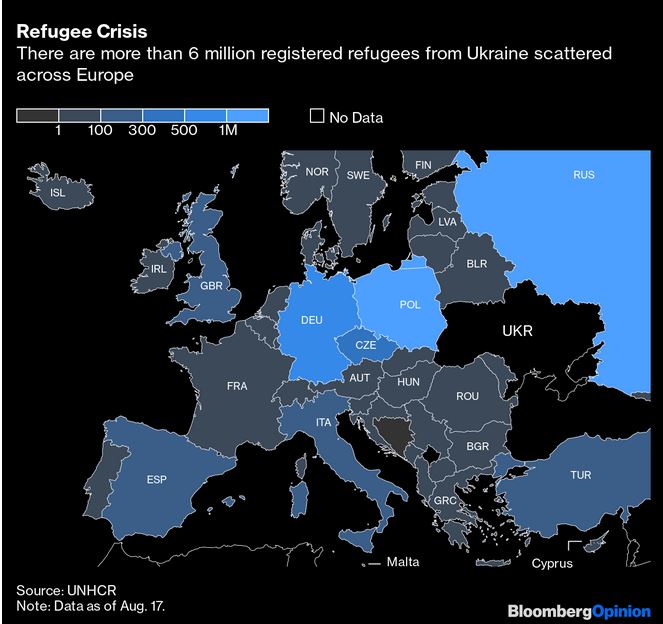 |
Air-Conditioned Clothing Becomes the Latest Way to Beat the Heat
Sales of jackets and vests with built-in fans are climbing as more places endure stifling temperatures.
See bloomberg.com
Famille de paysans et leurs bêtes (1646), par Paulus Potter, Alte Pinakothek, Munich
| 09 - 01/09/22 |  |
Piercing the Corporate Farm Myth, by Amanda, The Farmer’s Daughter USA,
While perusing posts by my friends on Facebook over the weekend, I ran across something from a friend describing the consequences of the site being publicly traded. She was under the impression that anyone owning a share of the website would now have absolute access and rights to any content she posted. I kindly explained what it meant for a corporation to be available for public shareholders and that her fears were unfounded. The misunderstanding about corporations got me thinking about the public perception of family farms and corporate farms.
Everyone seems to love family farms. Everyone seems to hate corporate farms.
But according to the EPA, 90% of farms in the United States are family farms. Only 3% of the total farms are “corporate,” and 90% of those are still family farmed. (The other 6% are considered partnerships.) So, is it really that 10% of the 3% of the total farms in the country making such a negative impact that people are turned off by them?
No. The truth is, people don’t understand how corporations works. And people don’t trust what they don’t understand.
.../...
See thefarmersdaughterusa.com
Carbon-kidnapping: an environment and economic sustainability success story, by Mateusz Ciasnocha, August 11, 2022
.../...
What is most important for everyone to understand is how the agriculture system functions. Rather than obsessing over a single metric, we all: farmers, public officials and media should look at the bigger picture regarding robust systems of agriculture—and how farms like ours are mitigating and adapting to climate change through soil health and carbon kidnapping. And as farmers, we must continually and proactively share this holistic understanding of the ecosystems we work in with the public.
See globalfarmernetwork.org
Deux cochons dans une porcherie (1649), Musée des beaux-arts de Houston, Houston, Texas
| 10 - 01/09/22 |  |
Chuck Norris jokes (the next from 11 to 20)
Most believe the Chuck Norris jokes trend originated from an episode of the popular television show, Walker, Texas Ranger, where Chuck Norris says: “You’re just jealous because you’re not as cool as me.” Though nobody knows for certain, all we know is that they're epic. Here are 50 of the best Chuck Norris jokes.
Disclaimer: it would be wise to laugh while reading this post, Chuck Norris will be watching. He is ALWAYS watching…
11. On the day Chuck Norris was born, roundhouse kick related deaths increased 25,000 percent.
12. Chuck Norris doesn’t call the wrong number, people answer the wrong phone.
13. Chuck Norris skipped school one day. That day has forever since been known as Sunday.
14. Most people have nightmares about Freddie Krueger, Freddie Krueger has nightmares about Chuck Norris.
15. Chuck Norris doesn’t flush the toilet. He scares the sh*t out of it.
16. Chuck Norris is not afraid of the dark, the dark is afraid of Chuck Norris.
17. Chuck Norris’s shadow once followed him too closely. It now stands 15 feet behind him.
18. Chuck Norris lost his virginity… before both his mother and his father.
19. Chuck Norris was the true star of Star Wars. He was the force.
+ One: Chuck Norris once built a snowman… out of water.
20. Someone once asked Chuck Norris if he was willing to sell his pee as a canned beverage. That beverage is known as Red Bull.
| |
The distribution of this efita newsletter is sponsored by vitisphere.com
Please, contribute to the content of your efita newsletter, and advertise your events, new publications, new products and new project in this newsletter. Without your support, it will not survive!
Contact: Guy WAKSMAN
E-mail: guy.waksman(a)laposte.net
To read this newsletter on our web site
See Efita
The archives of this newsletter
See Efita
Do not miss the Virus Jokes in English and French
About the EFITA mailing list
You can use the efita moderated list (> 15000 subscribers) to announce any event / product / web site / joke (!) related to IT in agriculture, environment, food industry and rural areas.
If you want to subscribe a friend, please fill in his form.
If you do not wish to receive our messages, please fill in the following form...

